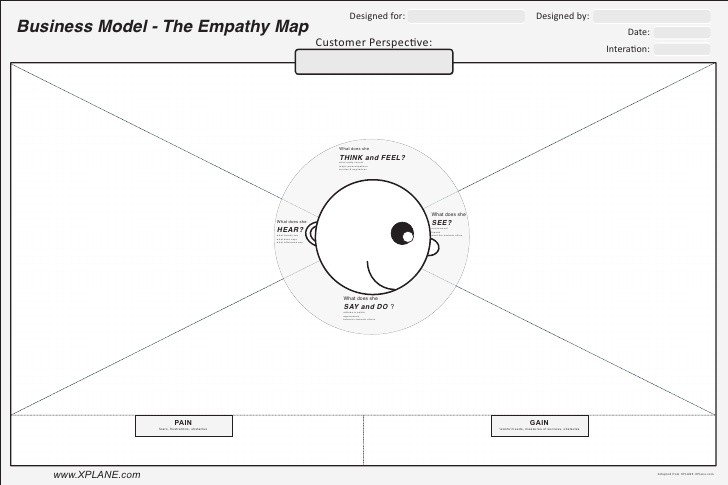Customer Journey Map, el mapa de la experiencia del cliente.
Como ya adelantábamos en anteriores artículos, en una estrategia de Inbound Marketing hay que darle valor a nuestro cliente y no pensar exclusivamente en números y ventas. Para ello, es esencial conocer a nuestro Buyer Persona y su Buyer Journey, es decir, el viaje que sigue el cliente con la compra como meta. Una vez teniendo toda esta información clara, el siguiente paso será comprender la experiencia del cliente y sus necesidades para poderle ofrecer un mejor servicio. ¿Cómo lo conseguimos? Creando un Customer Journey Map, la herramienta de la que os voy a hablar en el artículo de hoy.
¿Qué es el Customer Journey Map?
El Customer Journey Map es una herramienta heredada del design thinking y que nos permite delimitar el mapa del ciclo de vida del cliente: desde que nos conoce, hasta que nos compra. Se trata de un diagrama en el que de manera visual y emocional, definimos el proceso completo paso a paso. Nos servirá para marcar las etapas, interacciones, canales y puntos clave de nuestro Buyer Persona.
No es un estudio frío y racional, sino que tendremos que ponernos en la piel de los usuarios y pensar en sus sentimientos. Un CJM no es lineal, y consta de numerosos altibajos que pueden hacer que perdamos o ganemos a un cliente.
¿Para qué sirve?
Normalmente es difícil entender a los clientes y lo que verdaderamente quieren. Y sin embargo, esta es una de las claves para tener éxito en tus ventas. No obstante, muchas empresas se enfocan únicamente en los números, mientras que en una estrategia de Inbound Marketing lo que predomina es destinar todos los esfuerzos a personas reales.
Por ello, el CJM nos ayuda a ponernos en el lugar del cliente y conocerle en profundidad para poder llegar a él de una forma efectiva. Crearlo nos permitirá rediseñar la experiencia del cliente dando primacía a sus necesidades.
Una vez teniendo trackeada y recopilada esta información, nos será mucho más fácil definir la estrategia de Inbound Marketing a seguir, y las acciones que vamos a realizar. Al mismo tiempo, seremos capaces de ir un paso por delante del usuario, prevenir y corregir errores y debilidades. Por tanto, aprender sobre nuestros clientes nos permitirá mejorar nuestros servicios y esto repercutirá en última instancia en el aumento de nuestras ventas.
¿Cómo creamos el Customer Journey Map?
¡Aclaración! No existe ninguna fórmula mágica o estrella para crearlo, pero nosotros os vamos a ofrecer una guía de los pasos más comunes. Siéntete libre de simplificarlo o mejorarlo en función de tus objetivos o de tu negocio. ¡Ojo! El CJM es un documento vivo, lo tendrás que ir modificando conforme pase el tiempo.
1. Definir al cliente:
Antes de empezar, tenemos que tener claro quien es nuestro Buyer Persona, el cual habremos definido previamente si estamos inmersos en una estrategia de Inbound Marketing. Al mismo tiempo, crearemos un mapa de empatía, otra herramienta que nos permite profundizar todavía más en el entorno, la visión del mundo y las necesidades del cliente.

Plantilla Mapa de la Empatía – XPLANE
2. Entender las fases de la relación:
Para ponernos en la piel de nuestro cliente, tendremos que tener claro las fases por las que pasa hasta llegar a nosotros. En el Inbound Marketing esto es lo que se conoce como Buyer Journey, que cuenta con tres etapas primordiales: conocimiento (¿cómo nos conoce?), consideración (¿cómo le orientamos? y ¿cómo interactúa con nosotros?) y decisión (¿qué podemos ofrecerle?, ¿cómo nos diferenciamos? y ¿cómo le fidelizamos?).
3. Registrar los sentimientos de cada fase:
Una vez sabemos cuales son las fases, debemos entender las motivaciones, sentimientos, dudas y preocupaciones por los que pasa en cada momento. ¿Para qué nos sirve esto? Para captar oportunidades de negocio y adelantarnos a sus próximos movimientos ofreciéndole así una mejor experiencia o servicio. De este modo, nos tendrá más en cuenta frente a nuestra competencia en la última fase de decisión.
4. Mapear los Touchpoints:
Hay que detectar los puntos clave o «momentos de la verdad» del cliente para prevenir cómo vamos a interactuar con él. Cada usuario es un mundo y cada viaje es un mundo, pero puedes crear una línea general. Cada punto se define por dos aspectos: el canal por el que se produce y por la emoción que despierta (positiva, neutra o negativa).
Estos puntos los pintaremos en el diagrama: la parte más alta serán las emociones positivas, la media las neutras y las bajas las negativas. Después uniremos cada punto con lineas y tendremos delimitado el viaje, así que tendremos que definir las acciones que haremos en cada touchpoint.
Se trata de momentos críticos donde podemos triunfar o fracasar en el intento. Por tanto, también deberemos crear métricas que nos permitan identificar y medir esos puntos y las consecuencias de nuestras acciones.
Ahora que ya tienes las nociones básicas, solo falta ponerse ¡manos a la obra! Crea tu CJM y mejora la relación con tus clientes. ¡Hasta la próxima!



